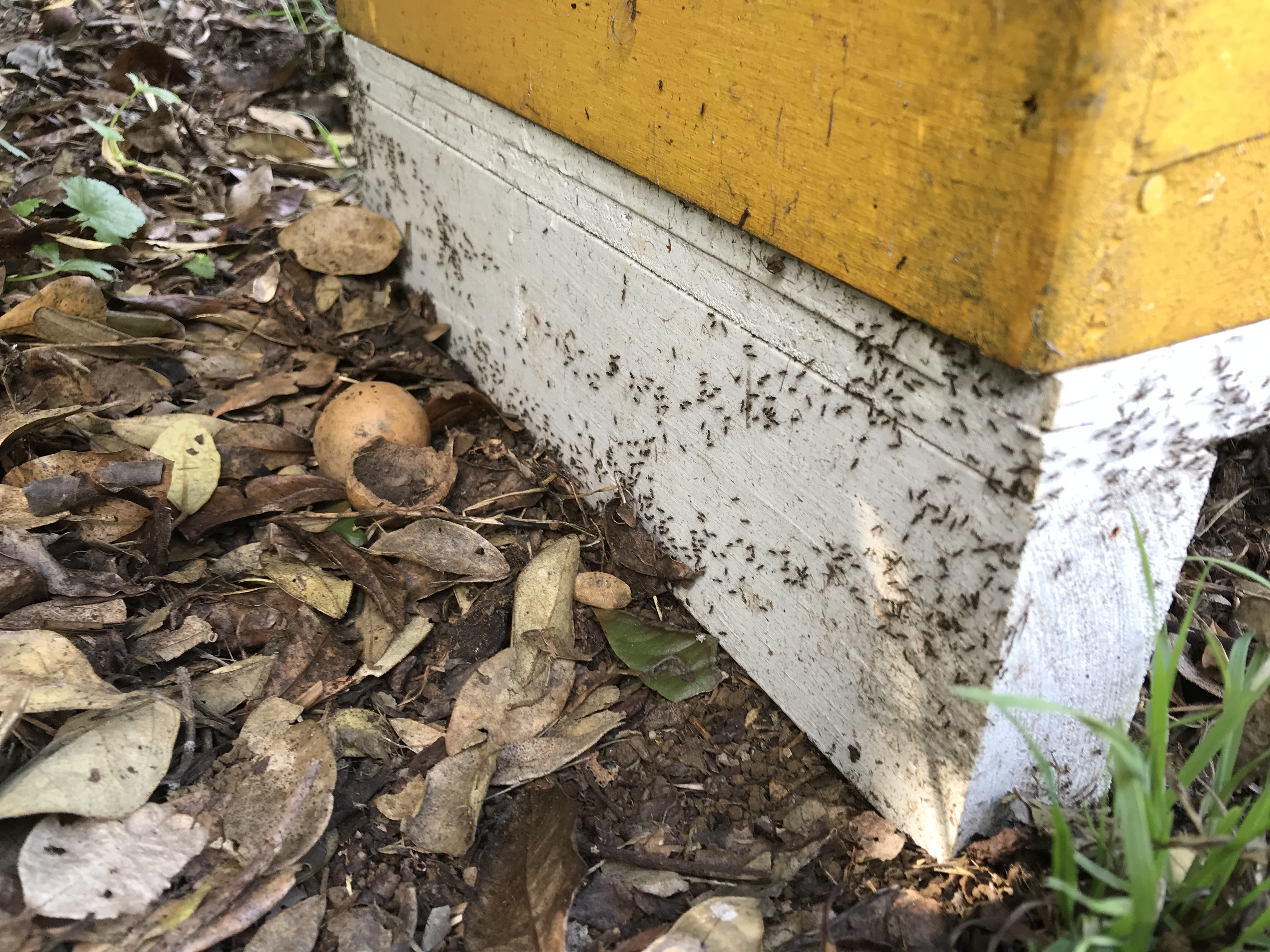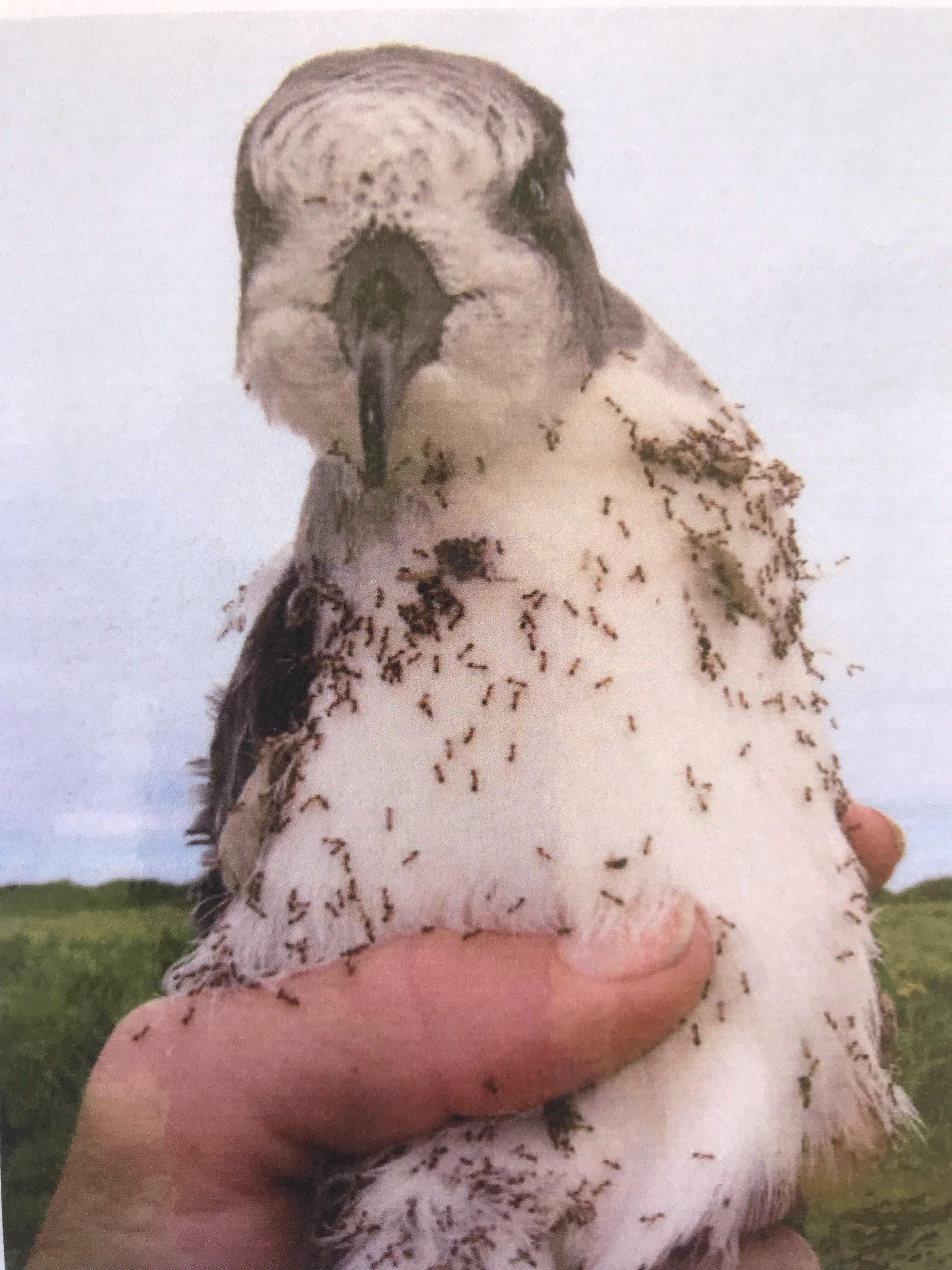Halting the March of Argentine Ants
Argentine Ants were first discovered on Norfolk Island in 2005 and have since established themselves in more than 20 separate and distinct ‘zones’ across the island.
They are among the most widespread invasive ant species in the world and are a major threat to our unique biodiversity. Highly aggressive towards other ant species, they will force other species out by dominating food sources and displacing native invertebrates, reducing their numbers enormously.
Super colonies, comprising networks of nests that can cover many hectares, result in very large ant populations. They will happily invade homes in search of food, as some island residents can confirm, having had them swarming through kitchens, bedrooms and bathrooms, and even nesting inside walls of buildings.
They will eat virtually anything and this combined with their large numbers, interferes with nesting seabirds, killing defenceless chicks and displacing nesting birds. Their love of pollen and nectar discourages bees from landing on flowers, and they can cause serious damage to beehives.
Island apiarists Merv Buffet and Clare McPherson have firsthand experience of the devastation these tiny insets can cause when they invade a beehive.
“As beekeepers, we appreciate what the Argentine Ant Eradication program is doing. It is vitally important that the Argentine Ant population is eradicated and while we want to avoid the loss of any honey bees in the process, it would be a small price to pay, as we all stand to lose far more than a few bees if the program is forfeited,” Merv Buffet said.
He recounts reports of an earlier invasion around the 1950’s, when an unidentified invasive ant species colonised the island.
“They took over, from the top of the pine trees to the seashore and everything else in between. I personally feel they were responsible for the extinction of at least three varieties of ants that were present on Norfolk Island at that time, the extinction of our native bat and they also caused the death of many birds in their nests as a result of being attacked.”
Merv also represents the apiary industry as a member of the Argentine Ant Eradication Steering Committee. This group, a mix of community members and officers from Norfolk Island National Park and Botanic Gardens and the Department of Infrastructure, Transport, Regional Development, Communications and the Arts, provides guidance and input to the eradication program, reviewing the regular updates of the CSIRO-prepared Eradication Strategy.
Norfolk Island Regional Council has been working with CSIRO to develop improvements in the eradication program that will minimise the risks to other insect species, following bee deaths some years ago. In 2021, a new protocol was rolled out, with apiarists on the island being key stakeholders and working with Council to keep bees as safe as possible. Knowing the devastation that Argentine Ants have on hives if left untreated, they were keen to remove the Argentine Ant threat and understand the best ways to do that.
The program includes both aerial and ground baiting using products approved by the APVMA that include fipronil at very low concentrations. For context, a concentration of less than 0.006g/kg for aerial baiting and less than 0.4g/kg is used for ground baiting, while products such as Termidor (used for termite control) are used at a concentration of less than 0.6g/kg.
While fipronil is acknowledged as the most effective product for use in the eradication of Argentine Ants, NIRC is currently waiting on Australian Pesticides and Veterinary Medicines Authority (APVMA) permits to start trialling different products which will have reduced impact on bees and other insects. One option is a new organic chemical called Spinosad, which is a natural substance made by a soil bacterium and reported to have reduced impact on bees and other insects. A second option is Vanquish Pro, which contains fipronil as the active ingredient, but also has a reduced impact on bees.
As part of the Argentine Ant Eradication Program, Council officers contact individual landholders to alert them of the dates the activity will take place and undertake a thorough environment assessment ahead of any baiting to ensure that any potential damage to off-target species is limited. As a result, beehives are physically relocated and locations with flowering plants are avoided during the baiting.
Aerial baiting never occurs over residential areas and buildings, and buffers are included around all water bodies on the island.
For more details about Argentine Ants and our eradication program, view our fact sheet. Click photos below to enlarge.
 |
 |
